| |
 
VALE
OF THE ANCIENTS
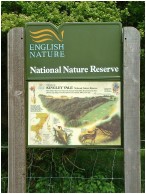 |
|
Hidden in a secret
fold in the Downs north of Chichester is
a group of ancient trees which are among
the oldest living things in Britain.
Tucked away under the southern tip of Bow
Hill, that huge whale-backed eminence
that is the main feature of the skyline
from the Solent, is a grove of ancient
yew trees, so old and so gnarled that it
is almost impossible to separate each
individual tree. Above them towers the
hill-top, surmounted by a group of huge
round burial mounds, known as the
Devil’s Humps, visible on the sky
line from the main road at Lavant.
This is Kingley Vale, now a National
Nature Reserve, and site of the largest
yew forest in Europe. The oldest trees
are said to be more than a thousand years
old. |
Even Julius Caesar
understood the toxic nature of yew. Every part
except the red flesh of the fruit is poisonous to
animals and humans, yet recently it has been
found that the leaves of the tree can be used in
a successful cancer treatment.
The six barrows at the top of the hill mark
important bronze age burials, but folk-lore,
inevitably having no truck with historical dates,
suggests that they are the tombs of Viking
chieftains killed in a battle with the Saxons.
The Anglo-Saxon Chronicle actually records a
battle between the men of Chichester and Viking
raiders in A.D. 894, so the legends may have some
foundation in fact. The yew trees below are said
to have sprung up upon the graves of stricken
warriors, and their ghosts are said to haunt the
area. Even the smaller trees are supposed to have
links with paganism, and local people hesitate to
go near the place at night.
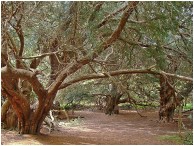 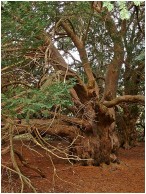 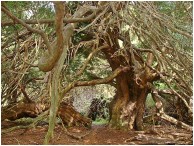
Ghostly it certainly is.
Enter the grove on a warm, sunny day, and it is
like a different world. Light hardly penetrates
the mangled canopy, and the temperature falls
alarmingly. The largest trees are so huge and
gnarled, and the light so dim, that it takes
little imagination to believe we are in the world
of Narnia or even Lord of the Rings.
The climb to the top is steep but rewarding, and
the chalk soil of the sweet-smelling slopes
supports a huge variety of wild flowers,
including bee orchids. In spring the open spaces
are full of bird song and in summer it is a
wonderful place for butterflies, whilst in autumn
vast flocks of fieldfares and redwings from
Scandinavia gorge themselves on the succulent red
berries of the yew trees. The biggest loss seems
to be the cuckoo. Whereas twenty years ago five
or six could be heard calling at one time in May,
the Warden says it is rare to hear one at all
nowadays.
Once at the top we find the Devil’s Humps,
and it is said that we can arrange to meet him by
running round the barrows backwards seven times.
But it’s a long way!
On a clear day the view is breathtaking,
dominated by the spire of Chichester Cathedral in
the centre. To the south-west lie the sparkling
silver inlets of Chichester Harbour with the Isle
of Wight beyond, whilst to the south-east
stretches the Selsey peninsula, with the tower
blocks of Bognor in the distance.
Sir Arthur
Tansley, the first Chairman of the Nature
Conservancy, who is commemorated by a
stone at the top of the hill, thought
that this was the finest view in the
whole of England.
The stone was put in place in November
1957, and the inscription reads: “In
the midst of this Nature Reserve, which
he brought into being, this stone calls
to memory Sir Arthur George Tansley FRS,
who, during a long lifetime, strove with
success to deepen the love and safeguard
the heritage of nature in the British
Isles.”
As a National Nature Reserve, Kingley
Vale, with its archaeology, its yew trees
and its wonderful variety of wildlife, is
safe for posterity. It is approached
along a well made-up footpath from the
village of West Stoke, just to the west
of Lavant. The car park is a kilometre
from the entrance to the reserve.
|
|
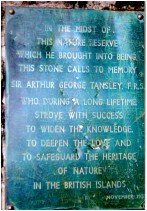 |
Tom Muckley, July 2004
This article was originally
published by the
Petersfield Post
tommuckley.co.uk
|
|






